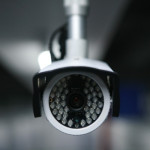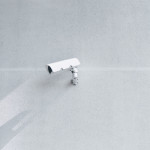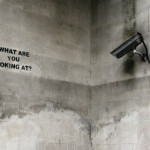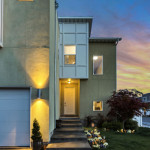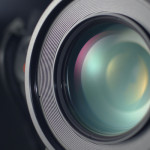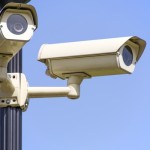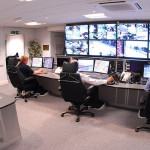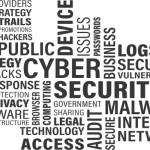Night Vision Security Camera Tips
Burglars often like to creep in the dark night in hopes of being undetected. This is precisely why night vision security cameras are so important. But keep in mind that the value of night vision cameras is directly connected to their effectiveness and performance. To employ the best night vision surveillance system, keep these things in mind.
- IP Power
Remember that all IR CCTV cameras have a quoted maximum range. For example, these can range from 5m to 50m or longer. This range is the absolute maximum, meaning at these extremes, your image quality will not be its best. Measuring how far you need to see and then adding a third of that is recommended. For example, if you need to see 30m, it may be advised to invest in a 40m camera.
On the other hand, you don’t want the IR to be too powerful either. Most CCTV cameras cannot adjust the IR brightness, thus, if a subject is too close to a camera designed for long ranges, it will simply look too bright and/or washed out.
- Wide Angle Lenses
IR LEDS are designed to brightly illuminate the center of an image, therefore, most of these cameras will not have a very wide angle of view. While this is not a common problem, some cameras will have varifocal lenses that can zoom out. With these, be aware that at the wide end of the zoom, the corners of your image will not be covered by night vision.
- Field Of View
For all security cameras, you want to be sure that the field of view is clear of obstructions, but this is especially important for IR CCTV cameras. If there is something like a branch or leaves in the frame, the LEDs will focus on these and they will be brightly lit. The rest of the image will be made darker in order to compensate, thus rendering the image is useless.
- Reflection For IR
In order for night vision cameras to work, IR needs something to reflect off of. When users point a camera into an empty field, they may be alarmed when there is nothing but darkness and may assume the night vision is not working, but this is not the case. When a subject moves into range, the IR can reflect off of it, and thus, the subject will be visible.
- Mounting Height
Keep the height at which your cameras will be installed in mind when you are considering the power of your night vision. This is especially important when installing cameras above ground floor height. For example, if your car is parked 4m away from your house, and your camera is mounted 3m from the ground, the actual distance from camera to car is 5m.
Share your own night vision camera tips with us on Facebook, Google+, Twitter, LinkedIn, and Pinterest!
For a great selection of night vision security cameras and surveillance equipment, visit SecurityCamExpert.com or call 888-203-6294 to speak with us directly.
Why Choose Wireless Security Systems?
Protecting your home from possible intruders is a high priority for most these days. When it comes to security systems, the debate between wired or wireless can be a tough decision. Both types offer advantages and disadvantages, with wired systems often seen as more reliable and wireless as more convenient. It really comes down to your own individual security needs and which type of system better suits these. Because wireless security camera systems are more advanced, they seem to be more appealing. Here we’ll review some of the important benefits of wireless security systems.
- Better Security
Wireless security systems offer better protection against intruders than wired security systems. Since wired systems use the telephone line or internet connection, if one or both of these are down, so is your security system. Wireless systems use more reliable cellular connections, and thus, the alarm will still be triggered via the dedicated cellular service or the batter powered backup system.
- Easy Installation
Most wireless systems are usually plug and play or DIY and can be set up in under 30 minutes, making installation of these systems and equipment easy and convenient. Wired systems require professional installation that takes longer to set up and test to ensure proper installation and functioning.
- Remote Surveillance
Wireless systems often provide other functions, such as controlling lights and locking and unlocking doors. These tasks can be managed remotely via an app installed on your smart phone or device.
- Mobile
Because they are easy to install, wireless security systems are also easy to uninstall and relocate. This is helpful when you are moving or even when you need to expand your system.
Although these seem like great advantages, they may not be right for you. As mentioned, it is important to evaluate your own security needs to better understand which type of system will work best for you. If you need help deciding, please feel free to contact us at 888-203-6294. You may request a free quote or schedule a site survey. Browse our comprehensive stock of affordable security solutions online at SecurityCamExpert.com and connect with us on Facebook, Google+, Twitter, LinkedIn and Pinterest.
Security Cameras: Common Positioning Mistakes
When security cameras are installed and positioned properly, they can provide effective security and video footage to protect your property. However, simple mistakes when implementing a security system can negate its effectiveness. To maximize your security systems performance and efficiency, be sure to avoid these common security camera mistakes.
- Multitasking
Try not to assign too many tasks to a single camera, as these will likely be executed poorly. Choose a single goal, such as capturing a face, a license plate, or general coverage, and optimize the placement and settings for that goal.
- Height
While the highest point of your property may seem ideal to capture a wide viewing range, it will not provide detailed images for identification. You want to place cameras high enough to deter tampering and vandalism while still finding a balance between the ultimate goal, the effective range, and number of cameras you are employing. This is why careful planning and calculations are crucial.
- Wide Dynamic Range
Doorways and windows are prone to an imbalance of light distribution, and, therefore require Wide Dynamic Range (WDR). Without it, you may not be able to capture a decent image unless the camera is in the proper angle or the person looks directly into the camera. Be sure to choose the right features for the appropriate locations and environment.
- Fixed Vs. PTZ
Because of their abilities, PTZ (Pan/Tilt/Zoom) cameras tend to be more appealing to customers. The problem is that after taking advantage of the features, the camera is hardly ever returned to its “home” location, and thus, is left focusing on less important areas. While they can be helpful tools in various situations, PTZ cameras are better used in conjunction with fixed cameras. That way, fixed cameras will always be focused on the key areas while the PTZ cameras can monitor the surrounding areas or points of interest as necessary.
- DVR/NVR Placement
Protecting your equipment is ever important, but sometimes, users leave the central brains of the systems as an afterthought. Be sure that the placement of your DVR/NVRs is both secure and efficient for your system.
- Lighting
You need to consider lighting, especially if you need to capture video overnight. Aside from night vision, be mindful of the available light in your camera locations. Be sure not to mount cameras too close to bright lights, which can disrupt the view.
- Masking High Traffic
It is important to adjust and program each device for a maximum balance of capturing required information and maximizing storage returns. If this is neglected, you may cause your DVR/NVR to shorten, thus limiting video retention.
- Proper Retention Calculation
Choosing a system that does not allow for customization of video retention time will limit your security system’s flexibility. Instead, look for systems which will allow you to modify your storage options based on your individual needs.
Build your ideal video surveillance system with us! Visit SecurityCamExpert.com to browse our stock or call 888-203-6294 to discuss your options. You can also connect with us on Facebook, Google+, Twitter, LinkedIn, and Pinterest.
Tips For Improving Your Home Security System
Home security camera systems help home owners protect their property and loved ones. They provide an extra set of eyes to monitor your home whether you are at home or away. Because of the financial investment, it is important to ensure that everything is working properly.
There are many ways in which you can optimize your surveillance cameras to get the most out of your security system. Here are a few smart security tips to improve your system.
Use Motion Detection
A security camera that is recording everything all the time sounds good in theory, but will require a large amount of memory and power. It will also be more difficult to sort through the mundane footage to find what you are looking for.
Thanks to motion detection, your camera does not have to record all the time. Motion detection enables your camera to start recording when activity in the field of view triggers the sensor. This means you will not need to worry about running out of storage space and makes it easier to sort through your recordings.
Consider Location
Choosing the right location for your security cameras is crucial. Be sure to adjust the angle of your camera to maximize your field of view and ensure that obstructions, such as trees or bushes, do not block the camera’s view.
Other Home Security Solutions
Although security cameras are important, they cannot do everything. Pairing your security camera system with a high quality and reliable alarm system can increase your home security overall and may even help with insurance discounts.
Multiple Cameras
While an outdoor security camera is common, often times, one camera is not enough. If there’s only one security camera present, it’s likely that burglars will work around that. You want your security cameras to monitor high traffic areas and points of entry (ex. front door, back door, first floor windows). That way, you get more comprehensive video surveillance should you become a target for home invasion.
Proper Maintenance
You can’t just set it and forget it when it comes to your surveillance system. Keeping your cameras clean and any potential obstructions at bay will help maintain the performance and effectiveness of your system. Skipping routine maintenance checks may cause your cameras to miss important moments.
Do you have any other home security tips? Share with us on Facebook, Google+, Twitter, LinkedIn, and Pinterest.
For a great selection of affordable security cameras and CCTV surveillance camera systems, please visit SecurityCamExpert.com. For more information about our installation services or to request a free quote, please call 888-203-6294.
Motion Detection: How It Works
Security cameras equipped with motion detection can be very helpful for home and business owners. Motion sensor cameras allow users to rest easy knowing the built-in sensors will alert them when activity is detected, eliminating the need for monitoring live feeds around the clock.
While motion detection can be very convenient, it can also prove to be a nuisance. False alarms caused by various reasons, such as pets, natural environmental changes, or even changes in lighting, can be frustrating, confusing, and a waste of time. In order for you to make the most of the motion detection feature, here’s what you need to know.
Types of Detection
While there are many different technologies that detect motion (ex. light pulses, thermal measurements, radio waves), for consumer security cameras, there are two methods that are commonly used.
Passive Infrared (PIR)
This method detects the ambient heat emitted by all living beings and is sometimes referred to as “heat vision.” The sensor is triggered when it detects enough movement of these warm “objects” and/or a significant temperature disparity between the object and the background scene. When triggered, it signals the security camera to start recording, and thus, the user is alerted.
Computer Vision (CV)
This approach involves camera software that analyzes sequential frames of live video for differences and registers a motion event when a significant change is detected. With that said, CV includes many different methods, which depend on the desired outcome and technical preference of the designers.
Of these methods, one of the easiest involves looking for a significant change in pixels over short periods of time compared to the longer term average. This will produce a simple ‘something happened’ signal. Another method tracks groups of pixels and tries to identify directional patterns in order to recognize moving objects.
What all of these methods have is common is the end goal – to detect motion and, if possible, determine the shape of the object that moved. Once that goal is achieved, more advanced methods can be applied to classify the moving object (ex. person, animal, vehicle, tree) to determine which detection signals are important (ex. person or vehicle) or irrelevant and can be dismissed (ex. animal or tree).
Pros & Cons
- PIR sensors are more reliable than CV-based cameras when it comes to filtering out insignificant activity (ex. curtains fluttering in the breeze from a nearby fan, change in the light streaming through a window)
- PIR is power efficient, thus often used in battery-powered cameras. PIR keeps these cameras them in a low-power, non-recording state until the PIR sensor detects motion. When motion is detected, they switch to a high-power recording state for a fixed period of time (ex. to capture a 30 second video clip) or until motion stops.
- The low-power mode of PIR can be a disadvantage as it may take more time to wake up and start recording than CV-based cameras. Consequently, you may miss part of the action that triggered the motion alert, such as the intruder’s approach when their face is most visible, which matters with forensic evidence. By nature, they are also incapable of detecting motion through glass, thus are not suitable for scenarios such as monitoring your yard with an indoor cameras aimed through a window.
- CV motion detection provides greater analysis of the scene and for identification of the object creating motion through advanced features (ex. person detection, facial recognition). However many of the algorithms that make this possible are too computationally intensive to run locally on the camera. Instead, they are computed on remote servers in the cloud, where they often can only be unlocked with a paid subscription, which can add significantly to the total cost of ownership of the camera.
- Because CV detection is also dependent on the quality of the algorithms, it is also more susceptible to false alarms. That is, any large change (ex. spinning ceiling fan, leaves blowing outside window, change in ambient lighting) can register as motion.
False Alarms
Of course, false alarms are one of the most frustrating downsides to motion detection. Luckily, manufacturers are aware of this and offer different ways to reduce these instances.
- PIR cameras usually allow users to adjust the sensitivity level within the accompanying app so that more- or less-pronounced motion triggers the sensor. For example, reducing the sensitivity level could require a moving object to be warmer or closer to the camera for it to be triggered.
- CV offers more options for combating false alarms. A popular option is to set motion detection zones, which basically allows you to tell your camera to ignore activity in certain parts of the field of view while focusing on specific areas for motion. This approach is fairly effective as your camera can focus on windows and doors (where breaches are most likely to occur) rather than the activity within your home.
- Based on the geometric properties of a moving object, CV is able to make quick judgment calls. For example, something very small relative to the field of view is either a small object (ex. a floating dust mote) or a larger object far away, both of which are not cause for triggering any sensors.
- With more advanced technology, CV-based cameras may also include person detection or facial recognition to decrease false alerts. Both technologies require a pre-existing database of recognized individuals and usually require a few weeks of use before accurate results are produced. And while these features are advanced, they are only as strong as the algorithms behind them (which is why different cameras with facial recognition can produce different results).
Motion detection is still a work in progress, and at this point, you likely get what you pay for. The good news is that our technologies are always improving, thus, motion detection has the potential for greatness on the future.
What are your thoughts on motion detection security cameras? Have you had success or failure with them? Share your experiences with us on Facebook, Google+, Twitter, LinkedIn, and Pinterest.
Visit SecurityCamExpert.com to browse our wide selection of affordable CCTV security cameras and surveillance packages. Call 888-203-6294 to request a site survey or free quote today!
Security Camera Image Sensors: CCD Vs. CMOS
Choosing the best security camera system can be based on many factors. When it comes to the individual security cameras, the quality of images and video captured is largely dependent on the image sensor.
The image sensor (also known as the “eye”) determines the imaging capability and performance of your security camera. Their duty is to convert an optical image into an electrical signal, and is either a charge-coupled device (CCD) or a complementary metal-oxide semiconductor (CMOS) active pixel sensor.
To better understand which type of image sensor will work best for your security camera needs, we will take a look at the differences between CCD and CMOS.
What Is A CCD Image Sensor?
CCD’s receive light and convert it to electrons, then carry the electrons to a specific area across the chip to be processed. The conversion of analog light signals into digital pixels takes place in the chip without distortion. The special manufacturing process of CCD’s produces high-quality sensors in terms of fidelity and light sensitivity.
What Is A CMOS Image Sensor?
The CMOS sensor came from the MOS active pixel image sensor which emerged in the 1960s. Since then, its design and function has greatly improved, containing integrated circuitry and arrays of pixel sensors. Unlike the CCD, CMOS sensors process the elections at the same place that it receives the light, thus making it faster and smaller. The CMOS is able to do so because it has multiple transistors at each pixel, offering flexibility because each pixel is treated individually.
CCD vs. CMOS
Now that we have covered the basics, we can compare the strengths and weaknesses of CCD and CMOS cameras.
- CCD cameras provide high-quality images with low noise (grain), whereas CMOS cameras are more susceptible to noise. CMOS cameras often need more light to create a low noise image at proper exposure.
- CCD cameras possess better light sensitivity than CMOS cameras, since the CMOS sensors have more transistors next to each pixel, which may interfere with the amount of light that reaches the photodiode (where the picture is processed).
- CMOS sensors consume less power since the processes are confined to a smaller area. CCD sensors consume as much as 100 times more than CMOS.
- CMOS chips require a simple and traditional manufacturing process (same as creating microchips) making them easier to produce and much more affordable than CCD. As mentioned, CCD sensors require a special manufacturing process which makes them more expensive.
Common Applications
In these common applications, one camera outshines the other.
- Because of their superior light sensitivity and large effective imaging area, CCD cameras are better suited for low light conditions than CMOS cameras.
- Since the CMOS image sensor is compact, CMOS cameras are better for hidden or covert surveillance.
- Choose CMOS cameras for high-frame speed video shooting since the CMOS image sensor has a very fast processing speed (thanks to its ability to directly convert photoelectric signal to digital signal).
Which type of security cameras do you prefer? Share with us on Facebook, Google+, Twitter, LinkedIn, and Pinterest.
To shop our stock of security cameras and surveillance equipment, including CMOS cameras and CCD cameras, visit SecurityCamExpert.com. If you are located in Southern California and would like to schedule a site survey or request a free quote, please call 888-203-6294.
Transitioning From Analog Security Cameras To IP Surveillance
Upgrading your analog security cameras to IP security cameras has plenty of benefits, including improved image quality and advanced features. Most IP surveillance systems can make use of existing network infrastructure that is in good condition, decreasing costs for installation. Whether you are looking to upgrade because your analog system is reaching end-of-life for support or because your needs have changed, an IP surveillance system is a smart decision.
Now, the actual task of transitioning from analog to IP security cameras should not be taken lightly. You want to be sure that you take all things into consideration to ensure that you choose the right IP video surveillance system and that it performs sufficiently. Here are a few aspects you should not overlook:
Goals & Challenges
If you are looking to achieve ROI, you must fully understand how your IP security system will be used. Operational goals and potential challenges should be determined beforehand. Think about what types of cameras and how much resolution you need, as well as how long the footage needs to be stored and which areas need coverage. Proper planning is crucial to the success of your security system.
Budgets
No one wants to pay an arm and a leg for a mediocre surveillance system. If done correctly, you don’t need to. By defining a security budget, you can find the right cameras and video management software (VMS) to fulfill your needs and achieve your goals.
Time
As much as a quick transition sounds ideal, it is not always feasible. Understand that a proper transition will take some time, and it may be in your best interest to plan a phased migration. This will help to accommodate budget availability and operational disruptions. Prioritize which area needs immediate attention and begin there.
Storage
Going from analog to IP improves video quality, but also requires more storage. Advanced VMS can help to effectively optimize your network resources and bandwidth consumption, thus decreasing networking and storage costs over time.
Staffing
A new IP video system may need additional staffing, so you should think about this and how you will train the new and existing staff. This will impact both overall costs and ROI of your system, and may affect cameras and software selection. For example, casinos require live monitoring around the clock while parking lot surveillance may use video analytics to alert security personnel of incidents or events that need attention.
Integration
Numerous third-party integrations can help to increase the efficiency of your system as well as manage costs. While most current systems have an IP-based interface for integration, leading suppliers also have a wide range of integrations which are tested and ready to apply. These can offer functionality, automation, and other enhancements to solve project needs.
Cybersecurity
Cybersecurity is of utmost importance, especially these days. If not addressed properly, going from analog to IP opens up your system, and any indirectly connected networks, to endless vulnerabilities. Be sure to discuss your specific network safeguards, policies, and strategies with your installer. Also, enlist a new IP security system that provides the appropriate cybersecurity architecture, software, devices, and policies.
Licensing
Pay attention to licensing requirements and Software Upgrade Plans (SUPs) or Service Level Agreements (SLAs) that come with most VMS systems. These cover everything from higher tiers of support to future upgrades. For example, third-party cameras may require a license for each IP address, and these licensing requirements can add additional costs.
Environmental Conditions
These include extreme heat or cold, humidity, corrosion, and high dust levels, along with ambient light levels, existing power sources, and network infrastructure. All of these can impact which security cameras and VMS equipment are necessary for you.
Redundancy
Because your security system should be operational and accessible at all times, it is important plan provisions for redundancy and back up for primary resources in case they fail. For most systems, simple RAID-5 or -6 redundancy in storage is sufficient. However, you should also consider budgeting for “failover” recorders and other server hardware, and have spare cameras on hand in case of failure.
It is only a matter of time until IP surveillance is the norm and analog security cameras are a thing of the past. But when the day comes, it is ever important to understand your security needs and what you expect from your IP surveillance system. Even a small mistake or misstep along the way can compromise your system.
Have you upgraded to an IP security camera system? Share your stories with us on Facebook, Google+, Twitter, LinkedIn and Pinterest. You can shop our selection online at SecurityCamExpert.com or call 888-203-6294 to inquire about our products, installation services, or request a free quote!
Low-Light Security Cameras
There’s something to be said about low-light security cameras. Because lighting conditions in different environments are not always ideal for surveillance, low-light security cameras enable us to capture respectable footage in these situations. And with new technology, the quality of low-light camera images has vastly improved.
But before you invest in low-light security cameras for your home or business, here are some important facts and tips to know to make the most of your security systems.
Here’s some important information in order to make the most of your security systems.
First and foremost, you should know the related terms you may come across:
- Low-Light
- Day/Night
- Starlight
- SenseUp
- Night Vision
- Light Finder
- Light Toucher
- Dark Finder
- Light Catcher
- Thermal Imaging
All of these terms refer to the same classification of surveillance cameras. And while some of these terms are trademarked by manufacturers, the most commonly used terms for these cameras are “low-light” and “day/night.”
How It Works
Despite the sometimes confusing terminology, the basic components remain the same for all low-light cameras: a lens and sensor and some level of image processing. And to be clear, low-light cameras are different than thermal cameras (which track heat rather than motion or images) or cameras with IR illuminators.
A majority of low-light cameras use an IR cut filter, which is a mechanical filter that sits between the lens and the sensor (CMOS chip). The name is derived from its ability to “cut out” or filter out IR illumination during the day to improve color quality. At night, as available light diminishes, it slides out of the way to allow more light to get the sensor, thus improving low-light video quality. In order to help the video quality, it is also captured in black and white. In most cameras the filter is mechanically driven by an algorithm, however, some cameras allow manual control.
Optics
Because nearly all the cameras contain IR cut filters, it comes down to the lens and the processing to set these items apart from one another. The lens transmits light to the sensor and then the data on the sensor is processed by a processor. The variance among cameras is often in the optics. You want to be sure that both the lens and the sensor are of great quality, otherwise the potential for stellar images will be wasted.
Processing
Aside from the optics, processing is an important factor in determining the best low-light camera for you. Most manufacturers employ the same OEM processor yet make their own adjustments to them. The ability to control the tuning of an image is crucial as the tuning of an image during daylight will likely not hold up at night or in complete darkness.
Pay close attention to image toning, noise suppression, and the ability to maintain color and contrast in low light as these often differentiate one camera from another.
Lux
Typical IR cameras will capture images between 1 lux and 0.1 lux, however, the latest technologies can allow .01 lux to 0.00001 lux. This means that what would have been a completely black image a few years ago now looks like a near-daytime picture thanks to new low- and ultralow-light sensors.
While this achievement is impressive, in reality, there will rarely be any situations where there is complete darkness. Some ambient light will likely be present, whether it is from street lamps, the moon, or even the stars.
Spec Sheets Vs. Live Demo
As discussed, the impressive low-light sensitivity and lux will likely be included in the spec sheets, along with other important features. However, these spec sheets often represent technical specifications as opposed to actual performance.
Instead of simply relying on spec sheets, try to find a manufacturer or company that will provide you with a live demo and comparisons. This will give you a better idea of the low-light camera’s performance and whether or not it lives up to your requirements. In addition, third party reviews can give you more insight as well.
Resolution
Just because a camera boasts a high megapixel count does not necessarily mean it will produce a better low-light image. With higher resolution and higher megapixels, each pixel becomes a smaller percentage of that sensor. For example, image the sensor has a fixed size, yet the resolution is doubled. The pixels are smaller, thus, the sensor for each pixel is also smaller, increasing the amount of sensitivity needed to maintain the same level of quality.
Lens Speed
The speed of the lens is important and investing in a fast lens and better optics is crucial. The lens determines what information reaches the sensor, and, because of this, you get what you pay for when it comes to lenses and optics.
Positioning & Distance
Proper positioning of your security cameras is critical. Focus on what you want to capture and the level of detail you need when choosing the location of your cameras.
Position surveillance cameras so that the common range of motion is moving across the field of view rather than having common movement coming toward the camera. Also, avoid bright light pointing directly at the lens – this can cause flare or “fog” on the image.
Consider the field of view in terms of distance. The level of detail from the camera is highly dictated by how close the camera is and how much it’s zoomed in.
And when it comes to distance, you want the right combination of lens and camera that factors in the distance from the area you are trying to monitor. If you need to detect motion from long distances, your best bet would be to switch to thermal cameras. Activity will be detected, however, it will be harder to determine whether it is a person or an animal.
Share your own knowledge of low-light surveillance cameras with us and your peers on Facebook, Google+, Twitter, LinkedIn, and Pinterest. To shop our selection of quality CCTV surveillance systems and security cameras, please visit SecurityCamExpert.com or call 888-203-6294 today!
Artificial Intelligence For Video Surveillance
There’s no denying that video surveillance technology has come a long way over the years. From grainy videos in its early stages to the quality software and clarity today, video surveillance continues to make great strides and advancements.
History
The goal of security cameras and surveillance systems is to capture, detect, and deter any unlawful behavior in and around homes, businesses, and public areas. Before, installing a security camera system was a costly and laborious job, involving lots of wires and cables running throughout the building. As technology progressed, security cameras became more accessible and affordable, allowing more users the opportunity to invest in their security. Now there are numerous DIY solutions that make it easy for homeowners to install and set up on their own security systems.
For businesses, implementing a team of people to actively monitor security cameras at all times was once the only option. Now, much of the monitoring aspect of security and surveillance systems can be automated. Rather than having the mundane task of watching numerous monitors, security cameras now have the ability to detect any suspicious or abnormal behaviors and will alert a security officer as necessary.
While we have seen the security industry flourish over the years, this is just the tip of the iceberg. Our technology will continue to advance and amaze us in ways we never thought possible.
Artificial Intelligence
Artificial intelligence (AI) in video surveillance enables the “smart” features we now see with security cameras. In general, security cameras enable us to monitor situations in real-time or go back to review previous footage. With the integration of AI technology, not only can we monitor in real-time, but potential issues can be identified before they become real problems.
With the emergence of video analytics, footage can be analyzed immediately to identify any abnormal activity or threats early on. This technology helps the software ‘learn’ what is normal in order to identify unusual behavior and is meant to make up for human error, rather than replace human monitoring all together.
While it was always a goal to integrate AI and video surveillance, the technology, from a hardware standpoint, was not ready. One of the issues that needed to be addressed was decreasing the power demand to a level low enough that would allow the technology to be embedded into the cameras.
As more cameras emerge with new AI technologies and processes, we will begin to see more advanced features including crowd density monitoring, facial recognition, stereoscopic vision, and behavior analysis.
Behavior analysis in particular is what a lot of tech companies are focusing on. By implementing a technology that can identify and recognize precursor patterns associated with crimes and other bad behavior, we may be able to greatly improve public safety and security.
A great example comes from the West Japan Railway, where it was found that 60% of people hit by trains in Japan were intoxicated. They have now installed security cameras that can automatically search for and detect signs of intoxication. Sleeping on benches, stumbling, falling, or standing motionless for long periods of time are behaviors that are recognized by the AI system. Human attendees are then notified and sent to check on the person.
Of course, a conversation about video surveillance always includes concerns about privacy. No one wants to feel like they are constantly being monitored, but developers insist that these systems know when to stop collecting information and monitoring. As these technologies continue to develop, you may soon be able to “teach” your system when to record and in which situations recording should halt.
Although it is still in its early stages, AI technology and video surveillance is heading in a positive and exciting direction. Mass adoption may still be a ways to go, but it’s great to see AI being applied in a new setting.
What are your thoughts on artificial intelligence and the video surveillance industry? Share with us on Facebook, Google+, Twitter, LinkedIn, and Pinterest. Browse our selection of security cameras and equipment online at SecurityCamExpert.com. To learn more about our installation services or to request a free quote, please call 888-203-6294.
CyberLabLA
It seems Los Angeles is continuing its efforts to shed light on cybersecurity in hopes to decrease risks all around. Initially, the city used federal grant funds to install tools to centralize cybersecurity issue monitoring. Now, officials have unveiled a cybersecurity initiative geared toward businesses and residents.
The Los Angeles Cyber Lab (CyberLabLA) is a new public-private-partnership led by a Board of Advisors including Mayor Eric Garcetti along with top Los Angeles businesses and government officials. CyberLabLA’s mission is to protect personal and protected information from malicious cyber threats by sharing the latest cybersecurity threat data, alerts and intelligence gathered by those involved. Free membership will be open to all businesses and Los Angeles residents.
While there have been threat-sharing partnerships in the past, none have emerged to address an entire region or small- and medium-sized businesses like this program plans to do. And despite the fact that companies in the same industry are more likely to face similar threats than those in unrelated industries, all businesses are expected to find value. Mayor Garcetti hopes that through shared knowledge of threats, regardless of industry, businesses in Los Angeles will be better protected.
Still in its infancy, CyberLabLA will roll out in three phases. Phase 1 will begin with Protection and Alerts in which Los Angeles will share information generated from its Integrated Security Operations Center (ISOC) with all members. These updates include cybersecurity data, alerts, indicators of compromise and threat intelligence. Phase 2 will invite members to share data with the organization, sans confidential or proprietary information for added security. Phase 3 will develop the Cyber Lab Innovation Incubator (Incubator). Security vendors will be able to test appliances and tools via virtual connections to a live, but isolated, city of Los Angeles network (“Honeypot”). The Incubator will be populated with student interns, affording them real world experience in a security environment. Eventually, the Incubator will generate additional intelligence and information to share with members.
Initial advisors include Anschutz Entertainment Group (Staples Center), Cisco, Motorola, Cedars-Sinai, City National Bank, Dollar Shave Club and SoCal Edison. The city’s move to push cybersecurity as a public service will not only benefit businesses, but its effects will trickle down and help to protect customers and residents as well.
What are your thoughts on CyberLabLA? Would you consider joining? Share with us on Facebook, Google+, Twitter, LinkedIn, and Pinterest.
For your physical security, browse our selection of CCTV surveillance systems at SecurityCamExpert.com. To request a site survey, free quote, or to schedule an installation, please call 888-203-6294.
